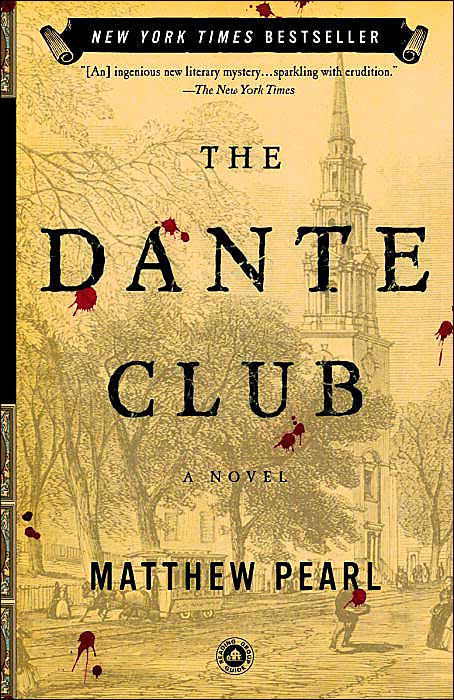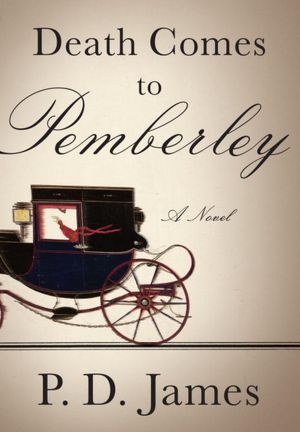Nothing adds more zest to a reading list like a mystery novel. And so, in way of keeping up with the holiday fervor, my reading theme this season is mystery, mayhem, and murder! The books I picked are: The Sherlockian (which I stumbled upon at the Strand Bookstore, NYC, and thought was a must-read), The Dante Club (a half-historical/half-fictional account about a series of brutal murders in 19th century Boston), and Death Comes to Pemberley (a recently released, bestselling Pride and Prejudice sequel). These books have an interesting commonality: they involve characters from literary classics and/or their creators. While I have tried my best to avoid major spoilers, I will be commenting on the general structure of each novel. So, beware!



Near the close of the 19th century, Arthur Conan Doyle tossed Sherlock Holmes over Reichenbach Falls bringing an abrupt end to his greatest creation and the world's favorite detective. Of his myriads of fans, some were disappointed, some riled, and many hysterical in mourning. Close to 8 years passed till he (rather suddenly) decided to resurrect his hero, a period which, in Sherlockian nomenclature, is referred to as the Great Hiatus. While no one knows what exactly prompted the resurrection, the inability to trace one of Conan Doyle's journals from this time has rattled many minds over the decades. In 2004, Richard Green, a renowned Sherlockian (an expert on Conan Doyle and Holmes), made the stirring announcement of having recovered this Holy Grail of a missing diary, an event soon to be followed by the shocking discovery of his strangled corpse. These clips from recent and not-so-recent history have inspired the making of The Sherlockian, a fascinating blend of fact and fiction that weaves two parallel and alternating story lines, one situated in the past and the other in the present, and cleverly ties them together in the end. One of these follows Conan Doyle through the Great Hiatus. The second pursues Harold White, the youngest member of the Baker Street Irregulars, as he embarks upon a quest for the missing diary in the aftermath of the murder of its discoverer Alex Cale. Conan Doyle and Harold both find themselves in dire need for translating Holmes' deductive acumen to solve real life mysteries. While Conan Doyle finds his Watson in Bram Stoker (of Count Dracula fame), Harold finds his in a charmingly feisty young lady about whom he knows precious little, certainly not enough to trust her! The two adventures are simultaneously concluded after an intriguing series of developments. At the end of the novel, the author provides a stimulating note that corroborates factual accuracy of several building blocks of the intricate plot, some of which I would have otherwise assumed to be pure fiction. Overall, this is a well-researched and well-plotted novel that makes a light and engaging read.
"Boston, 1865. A series of murders, all of them inspired by scenes in Dante’s Inferno. Only an elite group of America’s first Dante scholars—Henry Wadsworth Longfellow, Oliver Wendell Holmes, James Russell Lowell, and J. T. Fields—can solve the mystery. With the police baffled, more lives endangered, and Dante’s literary future at stake, the Dante Club must shed its sheltered literary existence and find the killer."—the back cover sums it up rather nicely. But some historical background is required here. While the murders are fictional, several of the characters in the book, including Longfellow, Holmes, Lowell, and Fields of course, were real. So was the Dante club. This group was convened to aid Longfellow in completing the first American translation of Dante Alighieri's epic poem Divine Comedy from Italian. The efforts were met with aggression owing to the classical obsession of the literary community of the time and their consequent protectionism toward Latin and Greek. The opening of the book is rather sensational with the gory visualization of the first murder and engages the reader almost instantly. Once the reader's attention is won, the author cleverly exploits this opportunity to feed the reader with a prodigious amount of information crucial for establishing the characters and the setting. This allows us to view the main characters (most of whom are celebrated poets of high literary stature) through near-vision goggles so that they appear as real people with individual quirks and idiosyncrasies. This initial strong connection with the characters proves to be critical and lasts through the length of the novel offering it much of its depth. The plot soon thickens as mayhem rocks the city, and the book becomes quite a page turner. A secondary theme (congruent with the novel's civil war setting) is the prevailing attitude toward African Americans as reflected by the numerous references to Thomas Sims and the Fugitive Slave Act and the compelling portrayal of the fictional character Detective Rey, a mulatto, or an individual of mixed racial descent. Impressive and solid underlying research, an intriguing plot, balanced pace, and beautiful language weaving the story line tightly make this book a phenomenal read. From a critical perspective, this is a piece of fiction that has the key literary elements (plot, character, setting, theme, style) executed with perfection. On a separate note, it was certainly fun to travel back in time and see what familiar locations in the city I live in today looked like some 146 years back.
It is a truth universally acknowledged that a modern sequel to a classical masterpiece must experience a multitude of encumbrances on its way to critical appreciation. Given the wide fan following of Austen's celebrated novel and of the author herself, there has been no dearth of undertakings which follow up on her well-plotted story lines or build up on her lifelike characters. And yet each attempt is received initially with breathless anticipation and eventually with ruthless criticism—either the modern language is dissonant with the classical setting or the author's frantic efforts to mimic Austen's style have fallen flat. And yet when I read NPR's "Pride and Prejudice meets Clue" portrayal of this particular sequel, I was pretty much sold. A murder mystery boasts its own set of charms and calls forth a completely different set of expectations. In this case, with the reputation of P. D. James as a murder mystery writer and my inability to imagine the voice of Austen narrating a gripping thriller, I was prepared for a departure from the classical style (you see I had earlier managed to survive several pages of Pride and Prejudice and Zombies). But I was mistaken. The style was rather sublime and the language polished with occasional long sentences and archaic wording that seemed to blend in well with the Regency era setting. The manner in which the familiar characters thought or reacted in new situations were aligned with my own perception of them and therefore felt convincing. I must say the opening of the book and the events leading up to and immediately following the murder were in particular quite a pleasure to read. What I had hoped for, after this point, was to see Darcy and Elizabeth out in the field doing some real detective work and to get a taste of early forensic science. What followed though was a realistic yet somewhat insipid portrayal of how Pemberley dealt with the social and familial repercussions of the disturbing event. I was relieved when the venue switched to the courtroom. But the most crushing disappointment for me was when, after patiently working through over two-thirds of the book, it dawned on me that there was not going to be any detection or mystery-solving anywhere in the book. There is a crime, there are unanswered questions, and there is an impeccable story line that explains it all. But an ending that unfolds on its own without making the characters (and the readers) sweat it out—where is the fun in that?
No comments:
Post a Comment